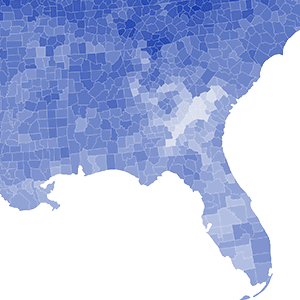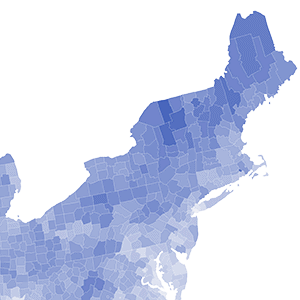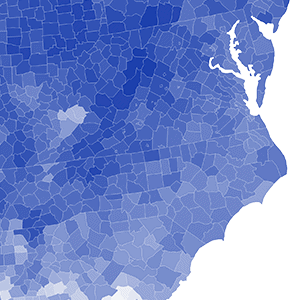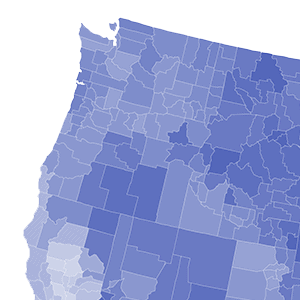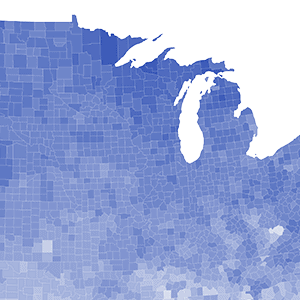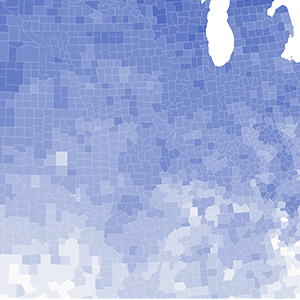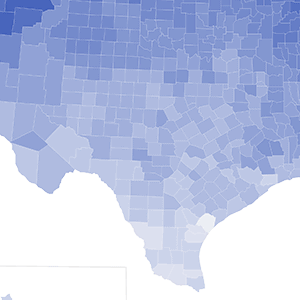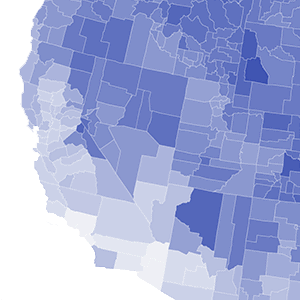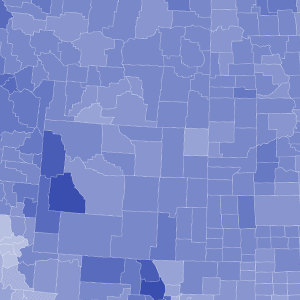The Two Factors That Affect Air Barrier Installation
Because many traditional air barrier products available today can only be applied under certain weather conditions, you’re already facing unpredictable installation delays. Combine the two different ranges of limitations for 1) the presence of moisture, and 2) temperatures below 40°F, and your window just got even smaller, potentially wreaking havoc to your construction schedule.
That is why PROSOCO made sure their air barriers didn't have these weather limitations.
The impact of moisture and temperature on the construction schedule
Percentage of days with either 0.1" of precipitation or temperatures below 40°F in the past year.
The impact of these two factors is felt almost everywhere.
Yes, data shows that construction sites get wet in Seattle and they get cold in Minnesota. But, the combination of these moisture and temperature limitations can have huge impacts on construction sites across the country.
The map above shows how counties across the nation are impacted by precipitation and temperatures below 40°F. (We talk more later on in this article why 40°F is an important temperature limitation.)
How weather affects air barrier installations across the U.S.
When we look at how moisture AND temperature impact air barrier installations in individual cities, we can find some unexpected results.
- The combination of these two factors can disrupt significant chunks of the calendar even in places like Tucson (20% at the time of writing) and San Antonio (25% at the time of writing).
- Upper midwest cities like Minneapolis (66%), Detriot (72%), Chicago (70%), and Indianapolis (67%) get a double whammy of moisture and cold temps.
- Alburquerque (44%) has total impacts that are similar to those of New York (48%).
- Reno (52%) has total impacts that are more than Seattle (51%).
Most air barriers cannot be installed in wet conditions
What to look out for
The chemistry of a traditional air barrier, like acrylic emulsion technology, is made to keep water out when fully cured. But any introduction of moisture into the process before the air barrier is fully cured can cause lots of problems. Here is a common statement from air barrier literature stating that not only can they not be installed in wet conditions but cannot be installed if there is a chance of rain in the forecast. If it does happen to rain within the 16-hour window listed on the technical data sheet below, the air barrier can literally wash right off the wall.

To avoid moisture limitations
PROSOCO's FastFlash system is a complete, monolithic building envelope system that can be applied in damp conditions and it is immediately waterproof so it can withstand rain right after application.
Days affected by moisture
Days per month with at least 0.1 inch of precipitation in 2019
Days affected by temperature
Days per month with temperatures below 40°F in 2019
Most air barriers cannot be applied to damp surfaces
What to look out for
Watch out for air barriers that can only be applied on a dry substrates. In reality, if an air barrier can only be applied in dry weather conditions to completely dry substrates, you may have to wait several days or even several weeks to make sure everything the substrates are dry, current conditions are dry and the forecast is dry as well.

To avoid moisture limitations
PROSOCO's FastFlash system is a complete, monolithic building envelope system that can be applied in damp conditions and it is immediately waterproof so it can withstand rain right after application.
The impact of moisture on the construction schedule
Percentage of days with at least 0.1" of precipitation in the past year
Most air barriers have low temperature limitations that aren't that low
What to look out for
Many air barriers like this acrylic emulsion air barrier state that the product should not be applied when temperatures are below 40°F.

To avoid temperature limitations
PROSOCO's FastFlash system is a complete, monolithic building envelope system that can be applied even in temperatures below 32° F.
These temperature limitations can be a big problem in most parts of the country, even in areas you wouldn't necessarily think of. Looking at the data below, the most affected cities are in the northeast, the Great Lakes region, and the midwest. No surprise there. But, what may surprise you is that cities like Charlotte, South Carolina, and Reno, Nevada have a similar number of days where temperatures get below 40° F as Chicago and Denver respectively.
The impact of temps below 40° on the construction schedule
Percentage of days with temperatures below 40° in the past year
All the data we analyzed show that the combination of temperature and moisture limitations of many air barriers can add up to big problems. PROSOCO's FastFlash system of air barrier products do not have these limitations and our nationwide network of building envelope technical specialists can help project teams find the right products for their buildings.
